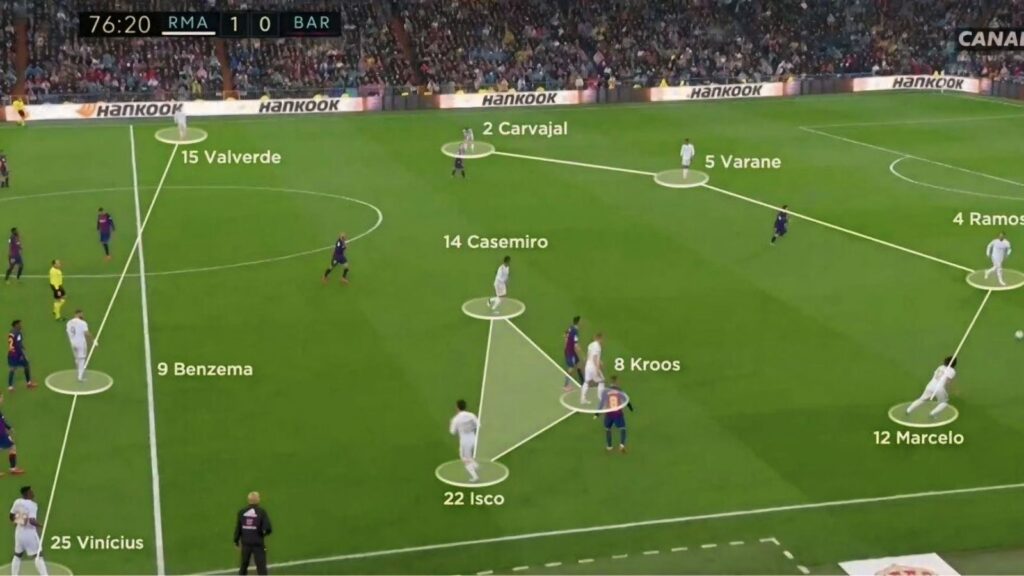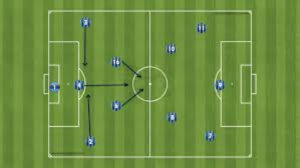Football has evolved significantly over the decades, and football tactics have played a central role in shaping the way the game is played. From the basic, attack-heavy formations of the early days to the modern, data-driven strategies used by today’s top managers, tactics are at the heart of football’s transformation. This journey through tactical evolution provides insight into how the beautiful game has grown over the years.
Early Football Tactics: The Birth of Formation
In football’s early days, tactics were relatively simple. Teams typically relied on the 2-3-5 formation, emphasizing attacking play with little focus on defense. Players, often positioned in forward areas, relied heavily on individual talent. The idea was simple: score more goals than the opposition, often with little consideration for defensive organization.
Want to learn about legendary players from this era? Check out our list of the greatest football players of all time.

The Rise of Defensive Tactics
By the 1930s, teams realized that without a solid defense, they couldn’t consistently win matches. This led to the birth of the WM formation, created by Herbert Chapman, who managed Arsenal at the time. The WM formation was revolutionary as it placed more players in defense and midfield, allowing teams to defend more effectively while still maintaining attacking potential.
This defensive focus started to shape football tactics globally. Teams no longer relied solely on outscoring their opponents—they began focusing on preventing goals as well. This approach marked the start of balanced football, where defense became just as important as attack.

Total Football: The Tactical Revolution of the 1970s
Fast forward to the 1970s, and the introduction of Total Football by Dutch manager Rinus Michels and his legendary Ajax and Netherlands teams revolutionized the tactical landscape. In Total Football, players were encouraged to interchange positions freely, creating a fluid and dynamic approach to the game. This system allowed for greater flexibility and creativity, with every player on the pitch capable of attacking or defending as needed.
Johan Cruyff, a key player in this system, was instrumental in bringing Total Football to life. His vision, movement, and technical skill made him the perfect player for this tactic, and his influence would resonate in football for decades to come.
For more insights into Johan Cruyff’s legacy, visit our feature on the greatest football players.

Johan Cyruf
The Defensive Masterclass: Catenaccio
At the same time that Total Football was making waves, Italian teams were mastering a highly defensive tactic known as Catenaccio. This strategy focused heavily on defensive solidity, with teams prioritizing clean sheets over scoring goals. It involved deploying a sweeper behind the defensive line to provide extra cover.
While Catenaccio often faced criticism for being overly defensive, it proved highly successful for teams like Inter Milan, who dominated European football in the 1960s. The clash between Catenaccio and Total Football in the 1972 European Cup Final between Ajax and Inter Milan epitomized the contrast between attack-minded and defense-oriented tactics.

The Modern Era: Tiki-Taka and Gegenpressing
In the 21st century, two tactics have dominated world football: Tiki-Taka and Gegenpressing. Tiki-Taka, popularized by Pep Guardiola’s Barcelona, focuses on short, quick passes and maintaining possession. It relies on constant movement, technical ability, and positional awareness to control the game. This style of play saw Barcelona and Spain dominate world football in the 2010s, winning numerous domestic and international titles.
Meanwhile, Gegenpressing, pioneered by Jurgen Klopp, emphasizes winning the ball back immediately after losing it. Rather than retreating after losing possession, teams employing Gegenpressing press aggressively to regain control, putting their opponents under constant pressure.

The Influence of Data and Technology in Football Tactics
As football continues to evolve, data and technology have become essential to modern football tactics. Advanced analytics allow managers to understand player performance, opposition weaknesses, and potential areas for tactical adjustments. Video analysis tools and GPS tracking provide real-time insights into player movement and team shape during matches.
Teams like Manchester City and Liverpool have embraced data-driven tactics, combining traditional football knowledge with cutting-edge technology to gain a competitive edge. With the increasing role of analytics, we can expect football tactics to become even more sophisticated in the future.

Conclusion: The Ongoing Evolution of Football Tactics
Football tactics will continue to evolve as the game grows and new technologies emerge. Whether it’s the fluid movement of Total Football, the relentless pressing of Gegenpressing, or the intricate passing of Tiki-Taka, tactics are at the heart of football’s enduring appeal. Understanding how football tactics have changed over time not only enriches our appreciation of the game but also highlights the genius of the managers and players who have shaped its history.
As football moves forward, we can only imagine the new tactical innovations that will arise. One thing is certain: the evolution of football tactics will never stop.
- Learn more about the greatest football players of all time.
- Explore our detailed match previews to see tactics in action.
- Discover more about modern football tactics at The Guardian Football.
- For a historical perspective on tactics, visit FIFA.





2 thoughts on “Football Tactics Evolution”